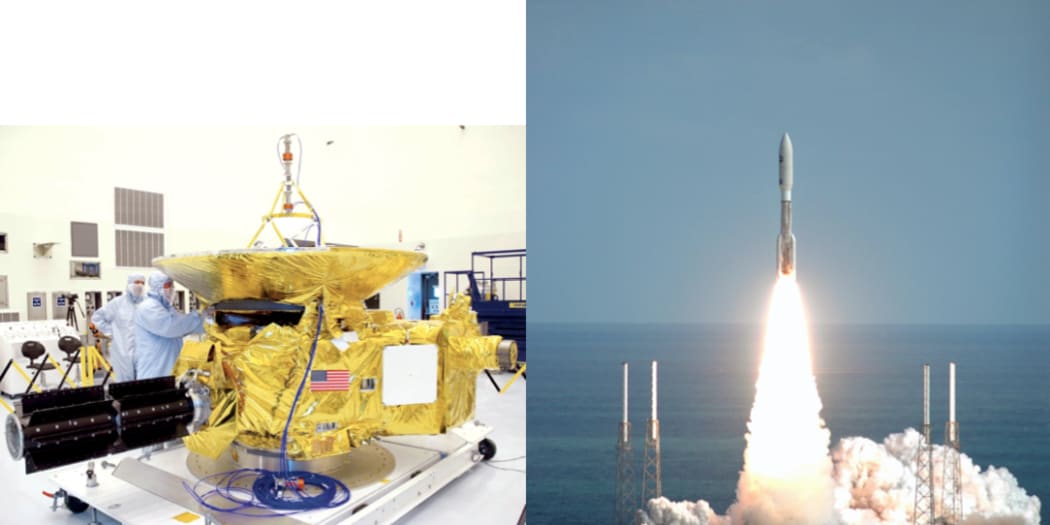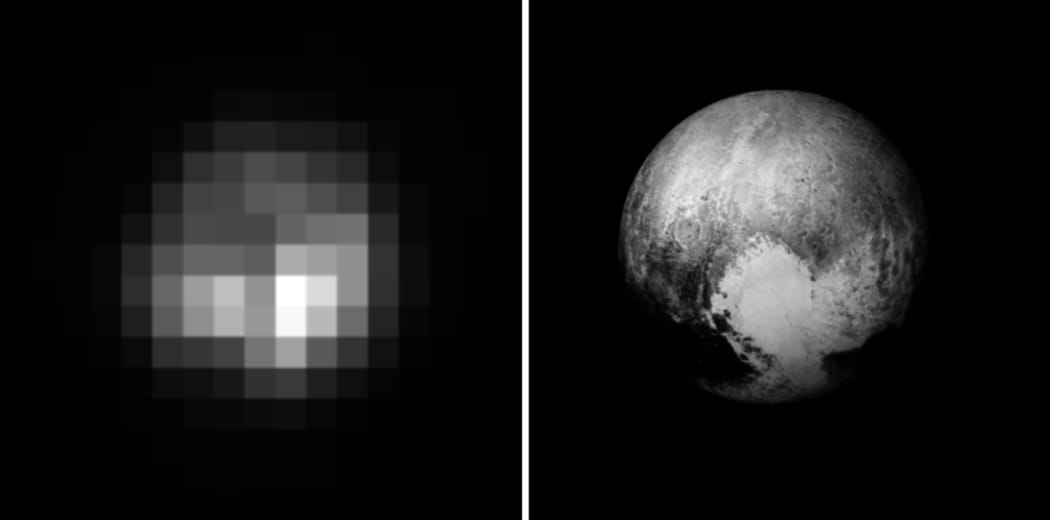
Photo: NASA
Pluto, with its plunging temperatures of -300C , is "an awfully little planet at the edge of the solar system" but it got Fran Bagenal, a Professor of Astrophysical and Planetary Sciences at the University of Colorado, excited.
She is an expert on magnetic fields and one of only two people to be on both the science teams for NASA's New Horizons missions to the outer solar system.
For Fran Bagenal it all began in 1989 when the Voyager mission to Neptune's orbit was winding up and NASA scientists were asking "where do we go now?" and Pluto was suggested. She says while dubious at first, as she found out more about the "bizarre little world at the edge of the solar system" she was hooked.
On January 19th, 2006, New Horizons was launched from Cape Canaveral. It took nine and a half years to get to Pluto.

The left image shows the New Horizons spacecraft during testing at Kennedy Space Center in 2005. At right, New Horizons lifts off from Cape Canaveral Air Force Station on Jan. 19, 2006. Photo: NASA
It is now on its way to '2014MU69' nicknamed, 'Jim Green' after the head of planetary sciences at NASA.
Fran Bagenal told Kathryn Ryan that her involvement with two major NASA missions had a lot to do with luck.

Pluto (left) was taken by the Faint Object Camera of the Hubble Space Telescope in 1994. Pluto (right) was taken by New Horizons just 16 hours before closest approach in July 2015. Photo: NASA

